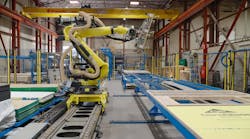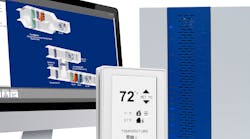A colleague recently asked me what I think are the biggest misconceptions mechanical engineers and contractors have regarding building automation systems (BAS). I found his question a bit hard to answer, as HVAC professionals for the most part understand well the capabilities and benefits of BAS. As I thought more about the question, however, it occurred to me BAS manufacturers and mechanical engineers and contractors sometimes bump into one another regarding certain key BAS terms.
I was reminded of two oft-repeated quotations from popular movies: “You keep using that word. I do not think it means what you think it means,” from the 1987 film “The Princess Bride,” and, “What we’ve got here is failure to communicate,” from the 1967 film “Cool Hand Luke.”
To help avoid failures to communicate, here is what two terms frequently used in the building-controls industry—open system and integrated system—typically mean when used by BAS developers.
Open System
When a BAS is said to be “open,” some mechanical engineers and contractors—as well as building owners—assume that means a protocol is in use, allowing equipment from multiple vendors to share information. Many so-called open systems, however, actually are limited. Although they might allow a range of equipment to talk with them, they are proprietary systems under manufacturer control. Contrast that with a truly open protocol such as BACnet that enables virtually any building system from virtually any manufacturer—everything from chillers and boilers to lights, security systems, and even elevators/escalators and irrigation systems—to share data.
Somewhat open is vastly different than very open. Think of it as the difference between a health-insurance plan that lets you choose any doctor in a network and one that lets you choose any doctor you want, period.
Integrated System
I often hear building owners, mechanical engineers, and contractors talk about the importance of having an integrated system of building controls. What they often mean is a BAS that can handle disparate building systems, from HVAC to lighting, fire detection, access controls, and more. Many BAS can do this by virtue of the BACnet protocol. The real power of BAS, however, is not just the ability to control nearly any building system, it is the ability to coordinate systems. So, while there is benefit in being able to control HVAC and lighting from one platform, for better energy savings and comfort, it is crucial those systems be brought into one schedule.
Imagine a facility manager for a school district who is scheduling HVAC and lighting for vacation days, when classrooms will be empty, for an entire school year. Even if the BAS controls both the HVAC and lighting, if those systems are not coordinated, the facility manager has to make two schedule updates. In contrast, with a truly integrated/coordinated system, the facility manager has to update the schedule only once, and the BAS will turn off the lights and turn down the HVAC on vacation days.
Final Thoughts
Having common definitions for words is critical to avoiding misunderstandings that can result in disappointed clients and lost business. If we are using the same words to mean different things, we will be no different than the title character in “Cool Hand Luke,” who says, “I’m just standin’ in the rain talkin’ to myself.”
When it comes to specifying a BAS that is truly open and provides full building-systems integration/coordination, there are many choices. A key differentiator these days is the level of service the BAS manufacturer and its partners/delivery agents provide. In addition to evaluating a BAS’s capabilities and ease of use, be sure to consider the level of support—from setup actions, such as adapting interface graphics, to building commissioning and warranty support—the manufacturer or delivery agent will provide.
Kevin Callahan is a product owner and evangelist for Alerton, a Honeywell business. He has 40 years of experience in building-control technologies, including control-systems design and commissioning, user training, and product development. He can be contacted at [email protected].









